With all options exhausted, India’s hospitals are joining Twitter to send out SOS calls for oxygen
India’s healthcare system is crumbling and Twitter is becoming the nerve centre for the crisis.
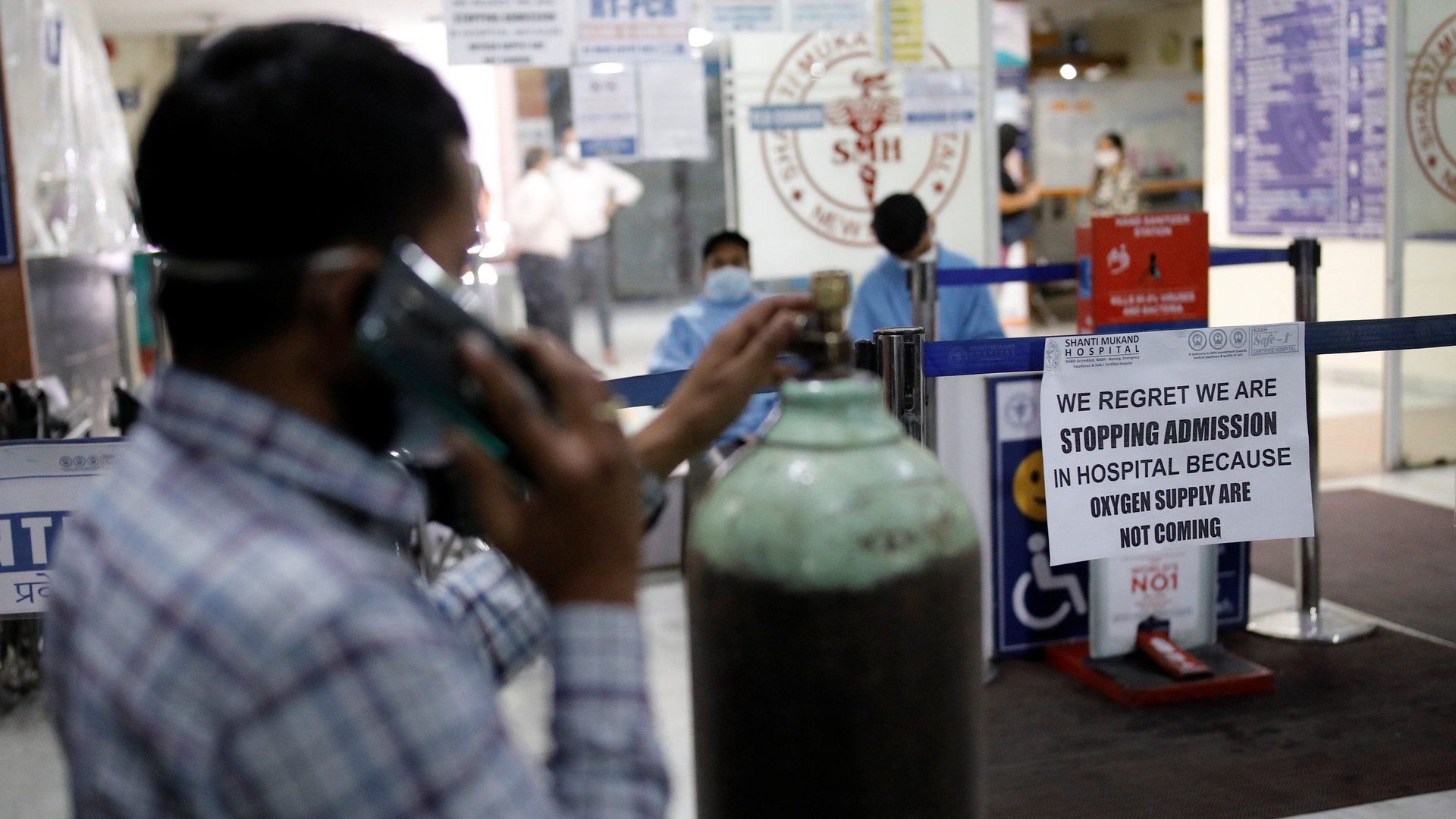

India’s healthcare system is crumbling and Twitter is becoming the nerve centre for the crisis.
A host of hospital management teams and doctors have created Twitter IDs in just the last couple of months only to send out #SOS requests, amplify issues, and connect with those who can help.
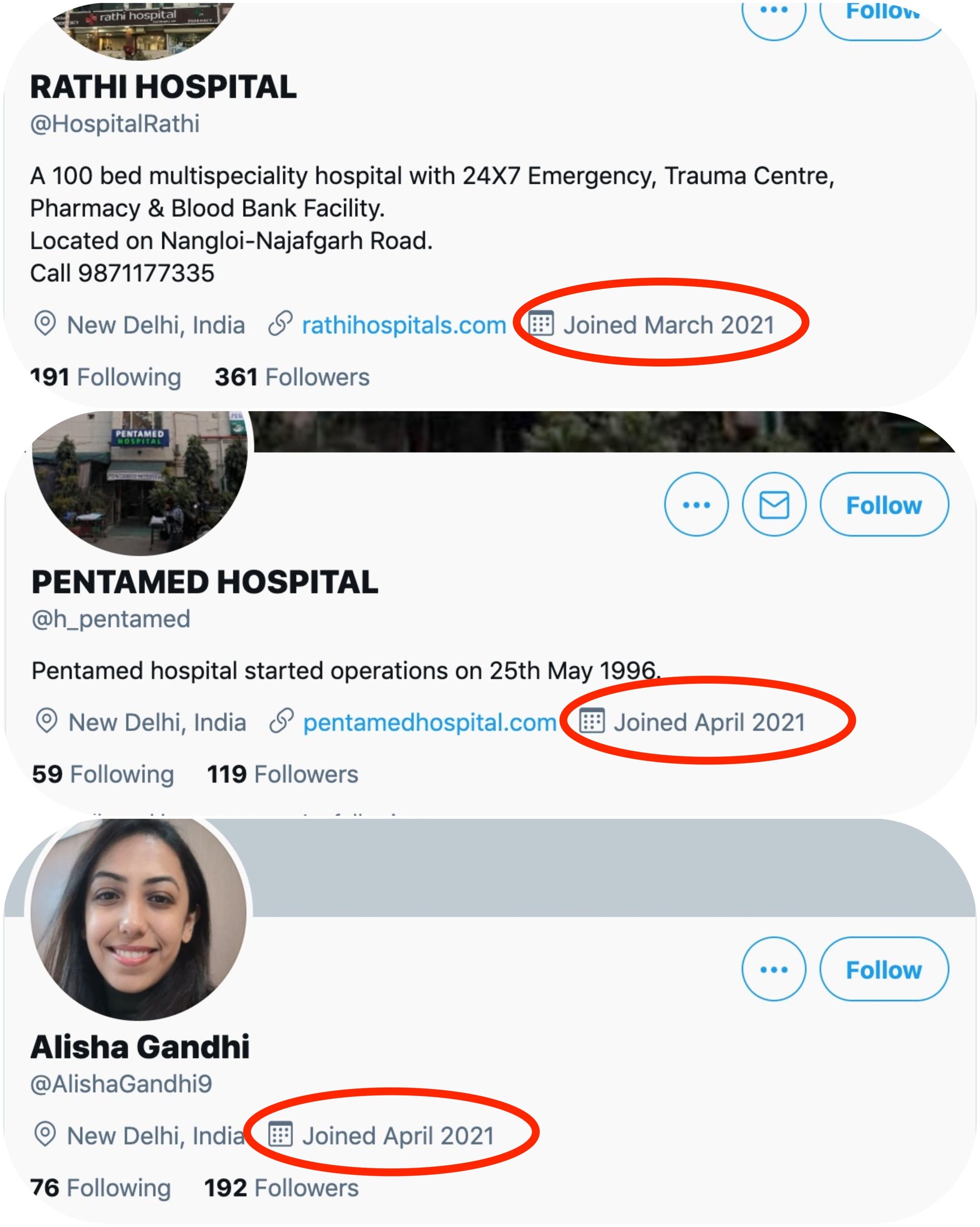
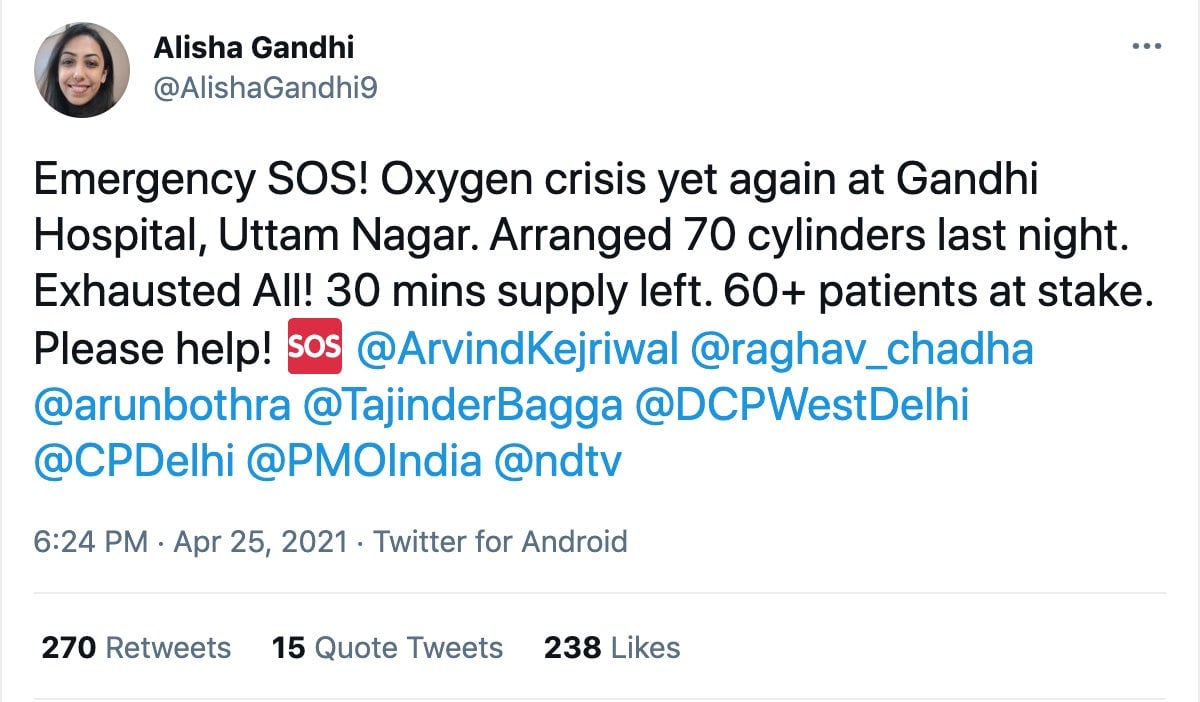
Hospitals that were active on Twitter earlier have changed how they use it.
For instance, Delhi’s Moolchand Hospital, which joined Twitter four months into the coronavirus outbreak in July 2020, steered away from the regular programming of its vaccine drive tweets to put out SOS messages.
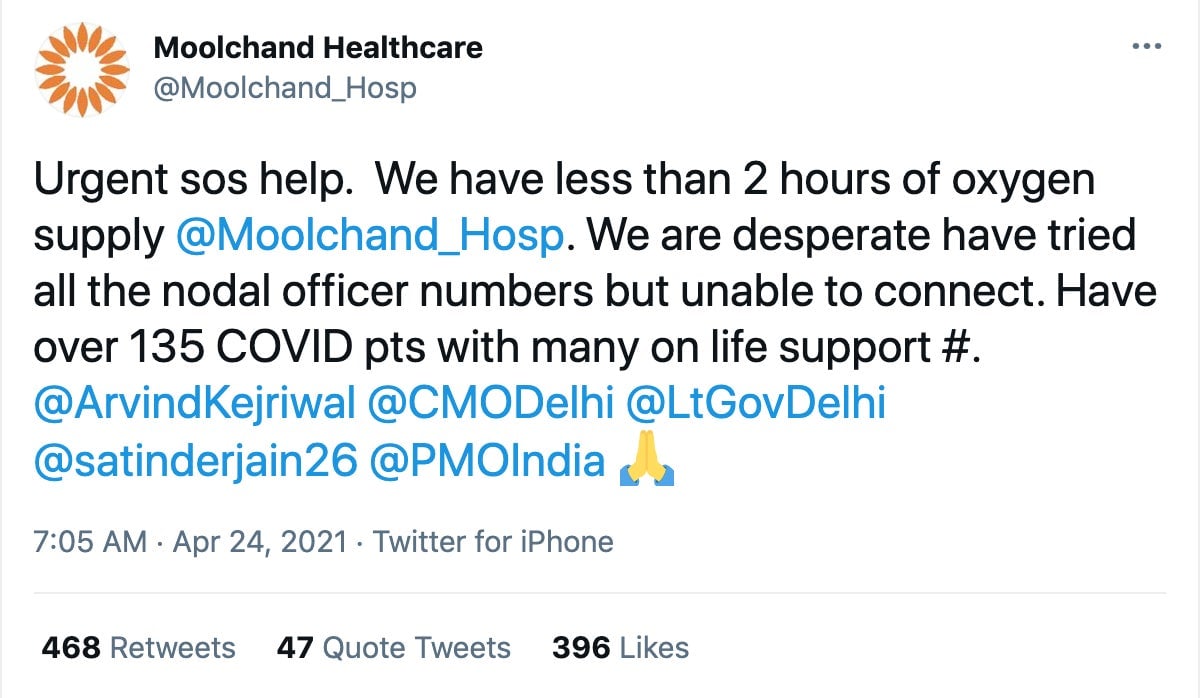
These requests are surfacing either because nobody knows who to ask for help, or their pleas to the authorities have failed to get aid.
Finding oxygen on Twitter
Typically, hospitals in India have tie-ups with vendors that supply oxygen on a regular basis. But earlier this month as the number of Covid-19 cases rose sharply across the country, the demand for the gas zoomed up sharply, and suppliers started running out of stock.
This forced hospitals to seek new vendors. But when they failed to source oxygen from anywhere—and since most state governments and the centre were unable to help—the obvious next step to save their patients was to reach out to millions of Indians via Twitter in the hope that someone might have a lead to find oxygen.
Twitter has around 17.5 million users in India. On April 23, Twitter launched an “advanced search” feature to make it easier to sort through information when looking for resources by location and time period.
Since many of these profiles are new and don’t have much following, they are tagging journalists, news channels, government officials, politicians, and celebrities to amplify their tweets.
On April 25, India Today deputy editor Sneha Mordani shared a video of Gautum Singh, the head of Shri Ram Singh Hospital & Heart Institute in east Delhi, pleading for oxygen after several failed attempts to acquire it. “We are trying since 4.30 in the morning. Our vehicles have gone to Bawana, they have gone to Faridabad, they have gone to Noida, to greater Noida,” he said. “We are not getting oxygen anywhere. We have young patients who’ll die in a matter of two hours.”
It’s easier to cut through the noise in the text-driven 280-character format than on platforms like Facebook or Instagram, according to experts. “I find Twitter to be the most effective tool in information dissemination,” said Ankur Bisen, senior vice-president of retail and consumer products at Technopak Advisors. “The kind of people sharing is more balanced compared to other mediums and there’s more instant information available in smaller bites.”
Such posts are also helping in putting pressure on governments to act.
Modi government called out on Twitter
Besides gathering leads and resources, Twitter has also emerged as a platform where doctors are exposing the inefficiencies of India’s dubitable healthcare processes, and the lack of transparency around it.
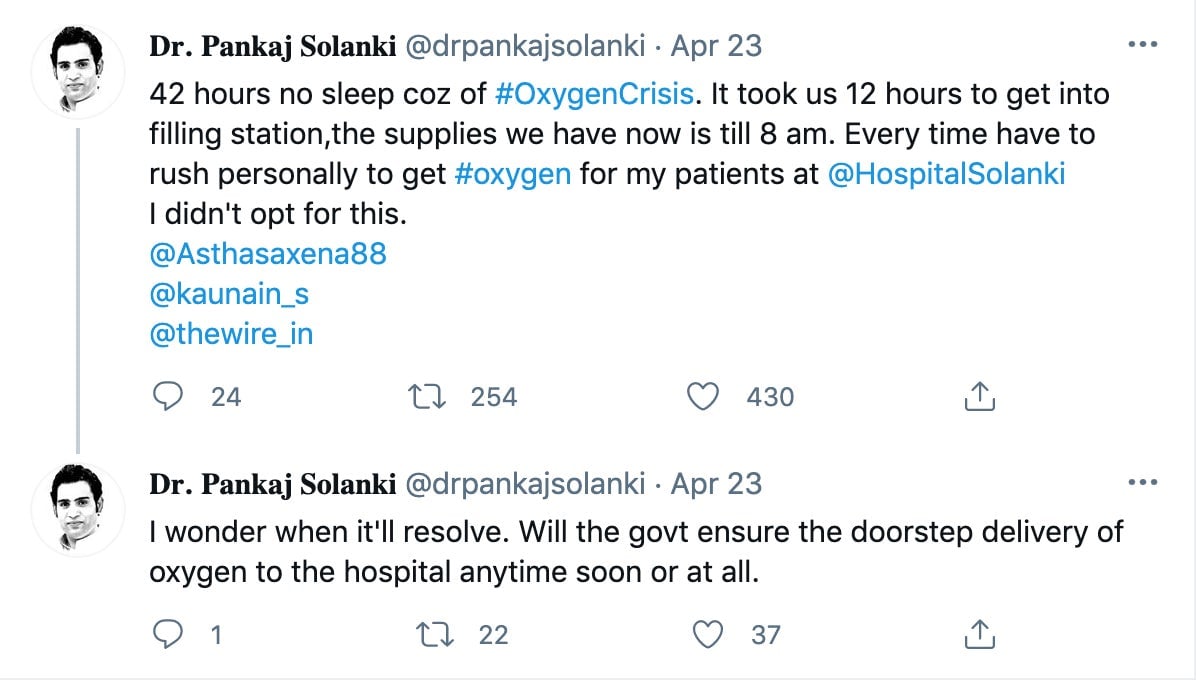
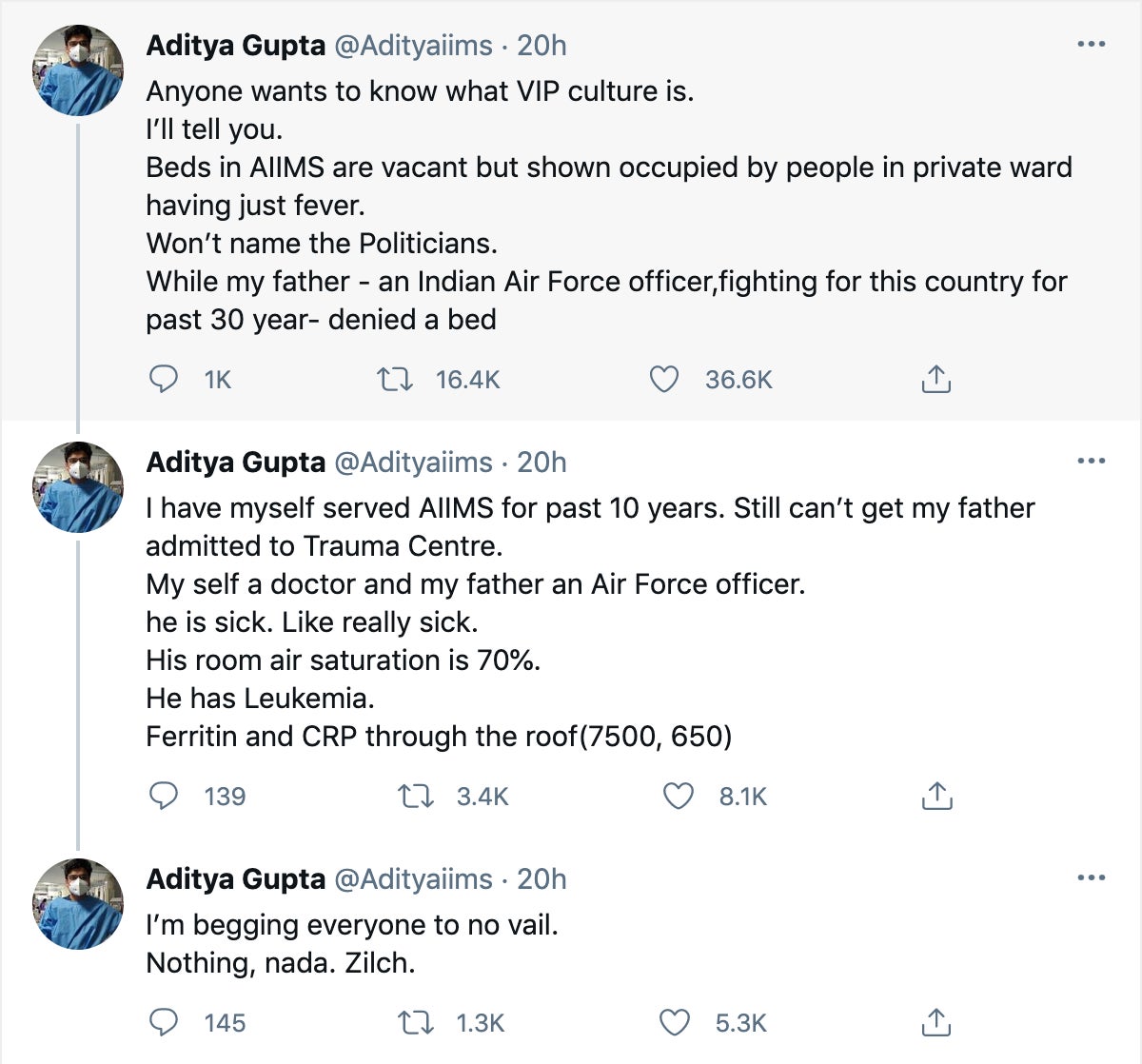
The Narendra Modi government, meanwhile, ordered Twitter to block over 50 tweets from politicians, actors, filmmakers, and others criticising its mismanagement of the pandemic. Among them was also a tweet by Indian American Muslim Council, comparing the targeting of Tablighi Jamaat with the near-silence over the Kumbh Mela.
While India clocks upwards of 300,000 cases daily, “the government’s alacrity in pressuring Twitter to block tweets critical of its handling of the crisis shows the administration’s moral compass continues to point in a direction that is shamelessly self-serving,” IAMC said in a statement after its tweet was taken down.